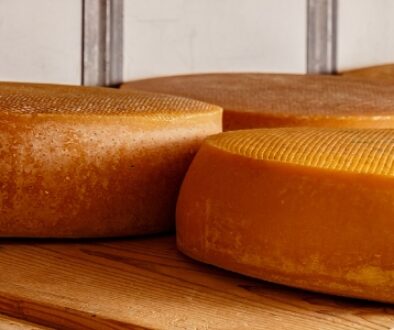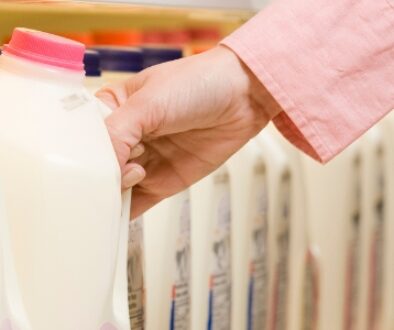Blue Cheeses Offer Nutritional and Therapeutic Benefits
Collectively, blue-veined cheeses are made using lactic acid-producing primary starter cultures (belonging to genera Lactococcus and strains of leuconostoc) and the secondary Penicillium roqueforti mold starter (predominantly mold spores). They include Roquefort (France), Danish Blue or Danablu (Denmark), Gorgonzola (Italy), Stilton (Britain), and the U.S. standard identity for “blue cheese.”
According to the U.S. standard of identity, blue cheese has a minimum milkfat content of 50% by weight of the solids and a maximum moisture content of 46% by weight. Nutritional facts of 1 ounce of blue cheese include total fat of 8.1 grams (which includes 5.3g of saturated fat) and 6.1 grams of protein. On the basis of percentage daily values, an ounce of blue cheese will contribute 12% of the daily value of total fat and 27% of the daily value of the saturated fat. Cholesterol amounts to 7% of the Recommended DietaryAllowance (RDA) and sodium is 14% of the RDA.
People tend to love or hate blue-veined cheeses.
Among those who don’t like them, some say the flavor is too strong. For others, concerns about blue-veined cheeses include:
• My doctor told me not to eat blue cheese because it has penicillin in it, which I am allergic to.
• I was told that the blue cheese mold is bad for health since it produces mycotoxins and aflatoxins that will harm my health.
• Blue cheese has high amounts of sodium, fat and cholesterol, and I am concerned it will cause heart disease.
• I have celiac disease, and I was told the Penicillium roqueforti mold used to make blue cheese has wheat in it with gluten as an active compound.
• People shouldn’t eat things with mold in it.
• I have lactose intolerance, and I do not want to eat blue cheese because according to my doctor blue cheese has a lot of lactose.
All of the above concerns are actually myths, which means they’re not true.
Contrary to the thinking of some, the secondary starter Penicillium roqueforti does not produce the antibiotic penicillin, mycotoxins, or aflatoxins. Regarding the high fat issue, preliminary clinical research on mice (in France) shows that the lipolyzed fat in blue cheese, although saturated, gets excreted by combining with other compounds and minerals and does not contribute to the accumulation in arteries to cause heart disease. The Canadian Celiac Association says analysis of blue cheese samples conducted at Health Canada’s Food Research Division found that neither cultures used with gluten-containing media nor those used with wheat-based dextrose exhibited detectable levels of gluten in the finished blue cheese. And finally, there is not enough lactose in blue cheese to cause lactose intolerance.
Meanwhile, there are many health benefits of blue cheese. The enzymes in blue cheese break down the milk proteins and fat in the blue cheese, making it easier to digest than some cheeses. In addition, these enzymes also assist the digestion of the other foods we traditionally consume to significantly improve digestion.
Like other dairy products, blue cheeses contain calcium and phosphorous to improve the bone and skeletal health.
In addition, Penicillium roqueforti used in the manufacture of the blue cheese can grow even at a lowest concentration of 0.3% oxygen and in the presence of 20 to 25% carbon dioxide. Thus, I can argue that certainly this beneficial mold can survive and establish in the GI tract (to a limited extent) to qualify itself as a beneficial probiotic. The mere fact that other probiotic bacterial strains coexist along with the Penicillium roqueforti in blue cheese partially proves the fact it can survive symbiotically and exert positive benefits in the human GI tract. Other health benefits of blue cheeses might include anti-inflammatory effects to protect from cardiovascular diseases and arthritis, the prevention of cellulite formation and immune system improvements.
This could be the reason why several European cultures eat blue-veined cheese, despite their strong flavor, as part of the dessert course: to improve digestion and derive other health benefits.
Keep up to date on current industry news here.
Source: Cheese Market News




